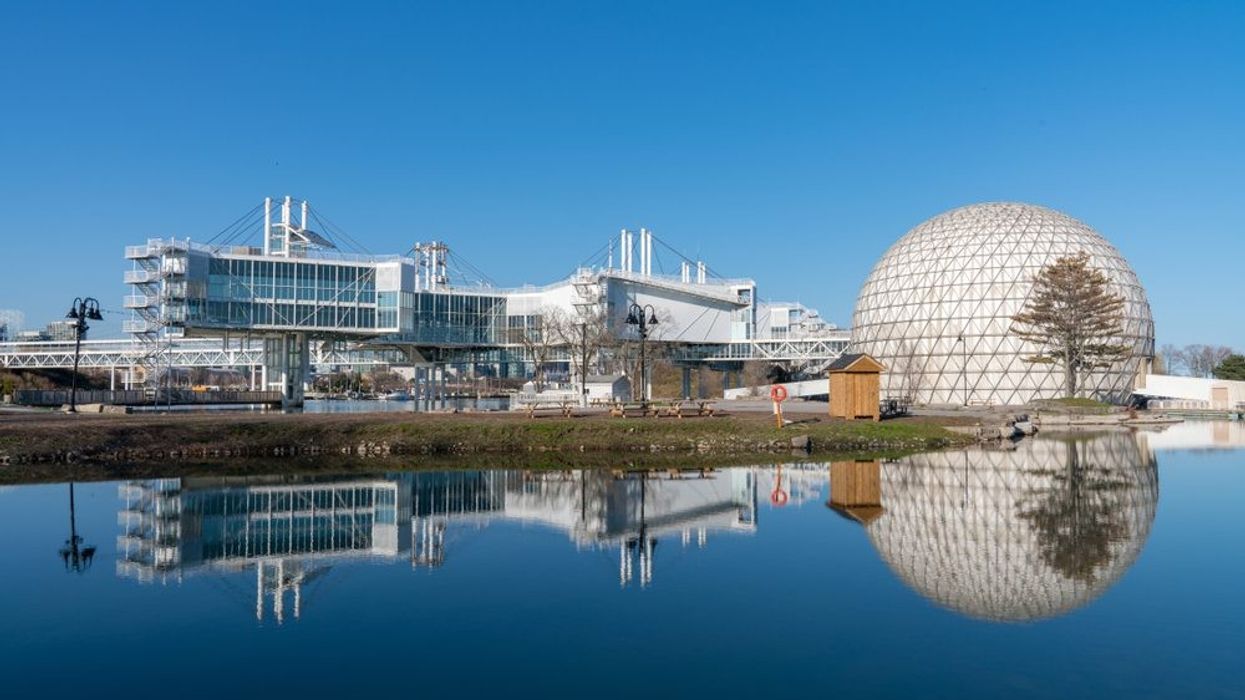When the newest plans for Ontario Place were unveiled just a few weeks ago, they were met with many choice words. Torontonians called the plans "problematic" and "unacceptable," arguing that the plans as they currently stand would turn the beloved landmark into a privatized cash grab, rather than the public grounds it was intended to be.
But these knee-jerk reactions reflect only a piece of the response to the new design. Diane Chin is the Chair of Architectural Conservancy Ontario (ACO). The organization's main concerns have to do with the cultural and heritage significance of Ontario Place.
In 2013, Ontario Place was added to the government’s List of Provincial Heritage Properties. This means the site is protected under the Ontario Heritage Act, and there are protocols in place to ensure that any alterations or developments preserve the original character.
"What they should have done is hire a consulting firm that specializes in conservation management plans, sometimes called a Strategic Conservation Plan," says Chin.
A Strategic Conservation Plan (SCP) was issued earlier this week -- it stated that "the provincial initiative to redevelop the property is the trigger to complete the SCP" -- but Chin says the whole process has been backwards.
"They should have had the Strategic Conservation Plan prepared first, before any tenants were selected," she says. "And then once that was done, looked at what would be a good fit in terms of development. We're not against developing of the site for more usage of the site for both local people and tourism, but it should be based on the heritage significance."
This isn't the first time Chin has voiced concerns over the plans for Ontario Place.
In May, she sent a media release to more than 60 media outlets on behalf of ACO. Although the release wasn't sent to STOREYS at that time, we have accessed it through Chin ahead of the publication of this article.
"Architectural Conservancy Ontario, Ontario Place for All, World Monuments Fund and the Future of Ontario Place Project are calling for all work on Ontario Place to immediately stop," it reads. "Despite months of being promised a Strategic Conservation Plan (SCP) was in the works, none materialized, and government staff told the groups in early May there would be no further communication until some time after the election... To start work without a plan in place is foolish. It could result in great wastes of taxpayers' money."
"I didn't get one follow up," says Chin. "I am really happy that the media is finally paying attention."
Even if you take the heritage significance of Ontario Place out of the equations, she says, there are valid concerns about how the impact the forthcoming structures will have on the environment.
"The Therme spa will be so disastrous for climate change and bird migration," adds Chin. "Those big glass buildings are going to be a site for so many birds migrating across the lake to smash into. Heating it in the winter, cooling it in the summer will be a tremendous use of energy. And they're going to have to charge a fortune to recoup the cost of maintaining this building."
Despite the clear disconnects outlined by Chin, the Ministry of Infrastructure seems unfazed. In a statement to STOREYS, Hayley Cooper, the Director of Communications in Minister Kinga Surma’s Office, doubles down on the plans, leaving the bulk of the public's grievances unaddressed.
"The Ontario Place redevelopment project will create a beautiful and cohesive landscape across the site that will seamlessly integrate the redeveloped sites with the expanded public realm. Once redevelopment is complete, the public will have free access to over two-thirds of the site year-round," Cooper's statement reads. "We are now bringing Ontario Place back to life, making it a remarkable world-class, year-round destination that will include family-friendly entertainment."
Cooper's statement goes on to say that public engagement on the matter has been conducted on six occasions thus far through digital surveys, public information sessions, and a Virtual Public Engagement Room. More opportunities for engagement will be facilitated in the months to come.
But Chin -- who has participated in these surveys and attended these sessions -- says the engagement avenues have been highly controlled. For instance, she says that there was only about half an hour during the sessions for the public to ask questions. And the survey questions were leading and restrictive, and didn't really offer participants a chance to provide candid feedback.
"They're going through the process, but not really engaging," she says. "I think the 'build, build, build' mantra and working with developers is getting in the way of what is the best for the environment, what is the best for landscapes, and what is the best for people."
Since the newest plans for Ontario Place were revealed, there has been a surplus of grievances from the public, the media, and regulatory entities. And now, there are concrete recommendations out there that take into consideration the government's aspirations for Ontario Place, but also consider how the forthcoming structures will impact the environment and the accessibility of the grounds.
For example, a recent article in the Toronto Star suggests moving the Therme spa to the CNE grounds, where it wouldn't disrupt nature or interfere with the heritage components of Ontario Place. Another article put together by George Baird, Aziza Chaouni, Bill Greaves, Javier Ors and published by Canadian Architect, suggests finding a way to incorporate renewable energy and ecosystem preservation into the site.
But will such complaints and recommendations amount to any real changes? We will have to wait and see.





















